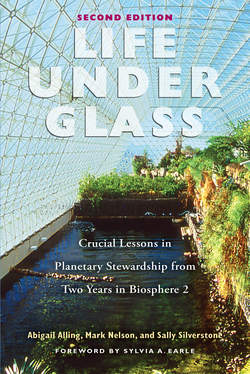Читать книгу Life Under Glass - Марк Нельсон - Страница 20
На сайте Литреса книга снята с продажи.
BIOSPHERE 2 NOW
ОглавлениеWhen Space Biosphere Ventures changed hands in 1994 and the facility was given to Columbia University, it was altered from operating as a biospheric laboratory to one where the biomes were separated to create a greenhouse with controlled environments. The regenerative farm was dismantled and the space was used to study trees in different CO2 environments. A crew no longer lived inside, the biospherian apartments were turned into offices and people and technicians entered to maintain the facility or collect data. The decline in the health and vitality of Biosphere 2 under this conventional scientific management illustrates that it takes both a detailed (reductionist) and a total system (holistic) approach to study a biosphere. The value of having live-in crews that could experience how each of our lives is dependent upon our biosphere was lost.
Research conducted when Biosphere 2 operated as a closed ecological system, from 1991-1994, produced a wealth of scientific data and publications. Unfortunately, much of the massive volumes of data collected from those first experiments are not available. Subsequent managers of the facility continued researching the ecosystems that were built, producing striking findings. Since the University of Arizona began managing the facility in 2007, they have carried forward the purposes of the project to serve as a center for research and education, in order to advance our understanding of the natural and man-made environment and catalyze interdisciplinary thinking and understanding about Earth and its future. Our vision was that Biosphere 2 would be the first of many biospheric laboratories that would be used for comparison with a range of different mini-biospheres to obtain critical knowledge about how life operates on planet Earth. It was named “2” to highlight that Biosphere 1 is our Earth’s biosphere, the one we all share. As the first prototype, we expected it would give rise to Biospheres 3, 4, 5 . . . all of which would be built for biospheric research and development of new technologies to restore our environment and generate environmentally-friendly economic technologies, such as new ways of cleaning our air, water, and preventing pollution. To put that program in monetary perspective: Biosphere 2’s estimated cost was approximately $200 million, which included land purchase, staff and consultant costs, design, construction, and operation of the experiment over the course of 10 years. This is equivalent to the cost of one modern military jet.
